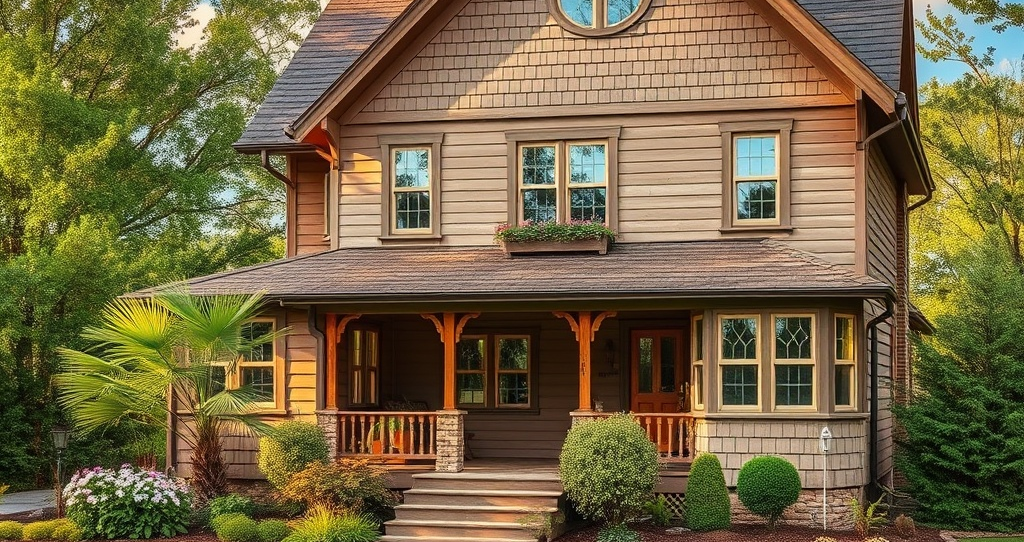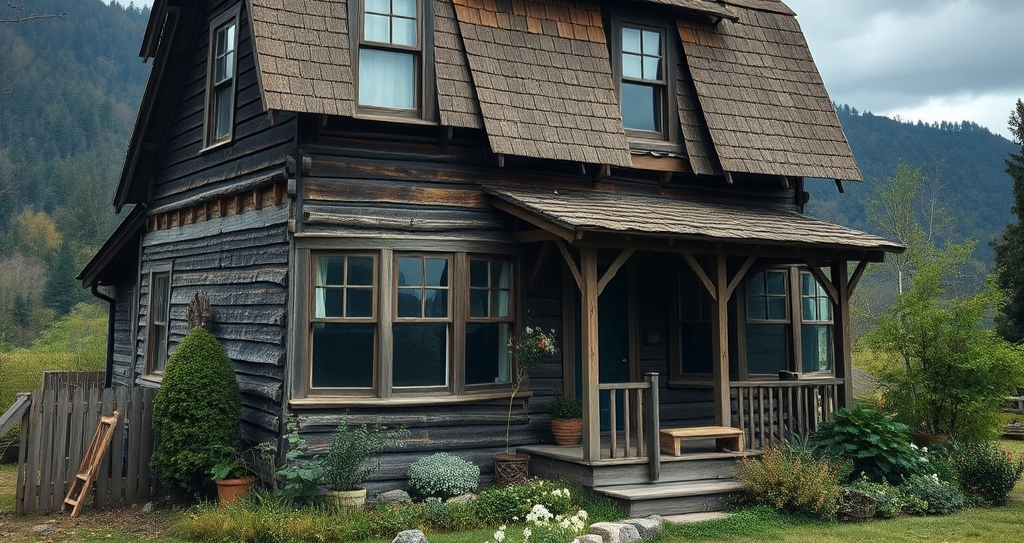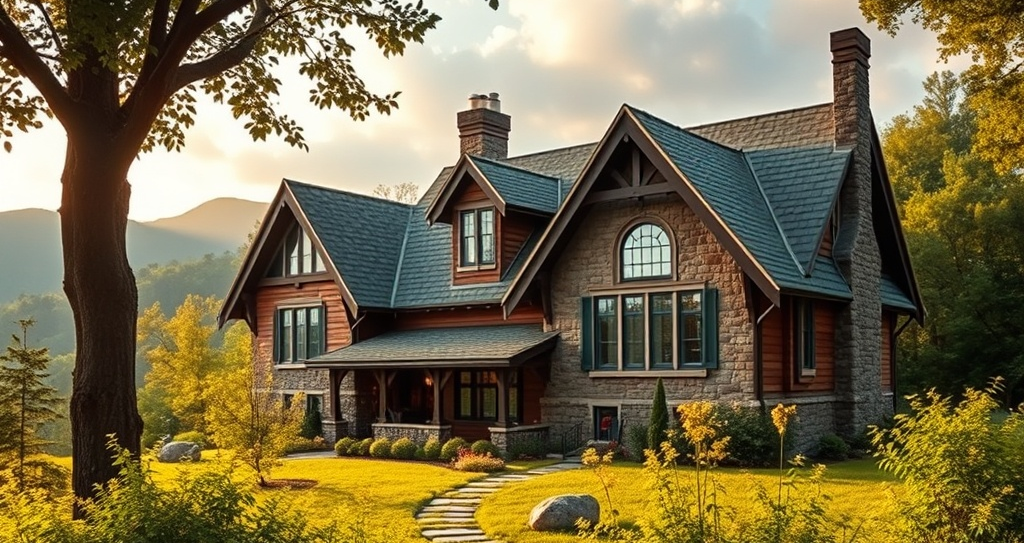Renovating an old home Exploring this is like taking a trip through history where every turn leads to something new. Tells a story and every feature has its own unique character. As we breathe new life into these historic Remember to find the right mix of preserving spaces their charm and integrating modern comforts. This comprehensive guide explores creative home renovation ideas for old homes that not only enhance their beauty and functionality but also maintain their historical essence.
Understanding the Unique Characteristics of Old Homes
Before diving into renovation ideas it is crucial to understand the distinct features that make old homes special. Older houses often possess unique architectural styles quality craftsmanship and materials that are increasingly rare in contemporary construction.
Architectural Styles Creative Home Renovation Ideas for Old Homes
From Victorian to Colonial every era has its architectural quirks. Familiarizing yourself with your home style can guide your renovation choices. For instance a Victorian home may benefit from intricate moldings and a color palette reflective of its period while a Craftsman bungalow might shine with its natural materials and earthy tones.
Materials and Craftsmanship
Old homes were built using high-quality materials and craftsmanship that are hard to replicate today. These materials often include solid wood real plaster and handmade bricks. During renovations it is important to either restore these materials or find modern equivalents that match their quality.
Restoring Historical Features
One of the primary goals in renovating an old home is to restore its historical features. This not only preserves the home character but also adds significant value.
Exposed Brick and Beams
Exposing brick walls and wooden beams can transform a space from ordinary to extraordinary.
How to Expose Brick
- Assess the Condition: Before proceeding check if the brick wall is in good condition. If it is structurally sound you can start removing the drywall or plaster that covers it.
- Cleaning: Use a big wire brush to clean the bricks and get rid of any dirty paint or mortar.
- Sealing: Once cleaned seal the brick with a clear masonry sealer to protect it from moisture and stains.
Maintaining Wooden Beams
If your home has wooden beams ensure they are not infested with termites or decaying. Consider sanding them down and applying a wood finish to enhance their appearance.
Restoring Original Moldings and Trim
Original moldings and trim can elevate the design of any room.
Steps to Restore Trim
- Repair Damaged Areas: Use wood filler to fix small cracks or holes.
- Sanding and Painting: Sand the trim to remove old paint or varnish and then repaint or stain it in a color that complements the room.
- Recreating Missing Pieces: If any pieces are missing consult a restoration expert who can recreate them to match the originals.
Modernizing the Kitchen While Preserving Charm

The kitchen is often considered the heart of the home and modernizing this space while retaining its historical charm is essential.
Open Up the Space
Older kitchens tend to be cramped. By eliminating non-load-bearing walls one can establish an open-plan layout that fosters seamless movement and engagement.
Implementing an Open Layout
- Structural Considerations: Before removing walls consult a structural engineer to ensure you are not compromising the integrity of the home.
- Using Half-Walls: If full removal is not possible consider creating a half-wall that maintains the open feel while still defining the kitchen space.
Incorporate Vintage Elements
Integrating vintage elements into a modern kitchen can create a harmonious blend of styles.
Choosing the Right Appliances
Look for retro-style appliances that offer modern functionality but maintain an old-fashioned aesthetic. Brands such as Smeg and Big Chill offer a lot of choices that can easily fit together into a vintage-inspired kitchen.
Vintage Lighting Fixtures
Consider hanging a vintage chandelier or using pendant lights that resemble those from the home original era.
Cabinetry and Countertops
When selecting cabinetry and countertops aim for a design that complements the home age.
Refurbishing Cabinets
Instead of replacing cabinets consider refinishing them. Paint them in muted tones or natural wood finishes and pair them with vintage hardware for an authentic touch.
Selecting Countertops
Opt for materials that resonate with the period such as butcher block or soapstone which can blend beautifully with the overall design.
Updating Bathrooms for Modern Comfort

Older bathrooms can feel cramped and outdated making renovations essential for improving comfort and functionality.
Install Clawfoot Tubs and Vintage Fixtures
A clawfoot tub is a classic element that adds elegance and nostalgia to any bathroom.
Choosing Fixtures
Select faucets and showerheads that reflect the vintage style. Polished brass or antique finishes can create a timeless look.
Utilizing Space Efficiently
To maximize space in small bathrooms consider built-in storage solutions that blend into the walls.
Creative Storage Solutions
- Floating Shelves: These can display decorative items while providing additional storage.
- Recessed Cabinets: Built into the wall these cabinets save space and maintain a clean look.
Updating Plumbing and Electrical Systems
Modern plumbing and electrical systems are vital for safety and efficiency.
Plumbing Upgrades
When renovating ensure all plumbing is updated to meet current standards. This may involve installing new pipes fixtures and drainage systems.
Electrical System Check
Upgrade the electrical system to handle modern appliances and lighting. Qualified electrician to check out your current electrical setup and make any needed upgrades.
Maximizing Natural Light and Space
Natural light is essential in making spaces feel open and inviting. Older homes often lack sufficient windows which can make them feel dark.
Install Larger Windows or Skylights
If possible consider enlarging existing windows or adding skylights to bring more light into the home.
Window Expansion Process
- Consulting an Architect: Before starting work with an architect ensure your plans are feasible.
- Selecting Energy-Efficient Windows: Choose double-glazed windows that improve insulation and reduce energy costs.
Repaint in Light Colors
Light colors can dramatically brighten up a room.
Choosing the Right Palette
Opt for white creams or pastel shades that reflect light and create an airy feel. Consider using different shades in different rooms to maintain interest and cohesion throughout the home.
Upgrading Flooring
The flooring in old homes can significantly impact the overall look and feel of a space.
Refinish Hardwood Floors
If your house has hardwood floors refinishing them can make them look beautiful again.
Refinishing Steps
- Sanding: Start by sanding the floors to remove the old finish.
- Staining: Choose a stain that matches your desired aesthetic.
- Sealing: Finish with a durable sealant to protect the wood from wear and tear.
Incorporate Eco-Friendly Materials
If you need to replace flooring consider sustainable options.
Sustainable Flooring Choices
- Bamboo: Durable and eco-friendly bamboo can add a modern touch.
- Cork: Soft and warm underfoot cork is also a sustainable option that offers sound insulation.
Enhancing Curb Appeal

The outward appearance of your residence forms the initial impression making it imperative to enhance its curb appeal.
Restore the Front Porch
Front porches are iconic features of many old homes. Restoring them can enhance both aesthetics and functionality.
Restoration Steps
- Structural Repairs: Check for any damaged boards or railings and replace them as needed.
- Paint and Decorate: Choose a color that complements your home and add comfortable furniture or swings to create an inviting space.
Landscaping and Garden Features
A well-maintained garden can significantly improve curb appeal.
Creating a Welcoming Landscape
- Pathways: Incorporate stone or brick pathways that lead visitors to your front door.
Energy Efficiency Upgrades
Improving the energy efficiency of an older house can lower your energy costs and make your home cozier.
Insulate Walls and Attics
Older homes often lack adequate insulation.
Insulation Options
- Foam Insulation: This is an excellent choice for attics as it can fill gaps and provide a tight seal.
- Blown-in Insulation: For walls consider blown-in insulation which can be added without major renovations.
Upgrade Windows and Doors
Old windows and doors are often drafty.
Selecting Energy-Efficient Options
Look for windows with low-E coatings that reflect heat or consider storm windows that can be added to existing frames for improved insulation.
Adding a Modern Extension
Sometimes no matter how well you renovate an old home may need additional space. Adding a modern extension can provide the necessary room while maintaining the home historical integrity.
Blend Old and New Architecture
When planning an extension ensure it complements the original structure.
Design Considerations
- Use Similar Materials: Matching bricks or wood will help the extension blend seamlessly.
- Architectural Features: Incorporate elements like gables or rooflines that echo the original home style.
Create Open Plan Living Spaces
Modern extensions often feature open-plan living areas that are perfect for entertaining.
Connecting Spaces
Use large doors or arches to create a flow between the extension and the original home. This can enhance the overall usability of the space.
Innovative Technology Solutions
Integrating technology into old homes can enhance comfort and efficiency.
Smart Home Systems
Think about using smart home technology that lets you control your lights heating and security from anywhere.
Smart Lighting Options
- Dimmers: Installing dimmers can create different atmospheres in your home.
- Smart Bulbs: These can be controlled via an app allowing for customizable lighting schedules.
Energy-Efficient Appliances
When replacing appliances look for energy-efficient models that reduce electricity usage.
Selecting Energy-Efficient Models
- Energy Star Appliances: These are more energy-efficient and can help you save money over time.
- Smart Thermostats: These can learn your schedule and adjust temperatures for efficiency.
Planning for the Future
As you undertake renovations think about the future needs of your home.
Consider Accessibility
If you plan to age in place consider modifications that will allow for easier movement in the home.
Accessibility Features
- Wider Doorways: These can accommodate wheelchairs and walkers.
- Non-slip Flooring: This can prevent falls and improve safety.
Long-Term Maintenance
Plan for long-term maintenance by selecting materials that are durable and easy to care for.
Choosing Durable Materials
- Composite Decking: For outdoor spaces consider composite materials that resist weathering.
- Low-Maintenance Siding: Fiber cement siding can mimic wood while offering superior durability.
Important Notes for Renovating Old Homes
- Research and Understand Your Home History:
- Before starting renovations take time to research the history and architectural style of your home. Understanding its original features and design will guide your renovation choices and help you maintain its character.
- Consult Professionals:
- Engaging professionals such as architects designers or contractors with experience in historic renovations is crucial. They can provide valuable insights to ensure compliance with local building codes and help prevent costly mistakes.
- Prioritize Structural Integrity:
- Always assess the structural integrity of your home first. Address any foundational issues roof leaks or pest infestations before moving on to cosmetic changes.
- Preserve Original Features:
- Retaining original architectural elements such as moldings doors and windows enhances the charm and value of your home. If restoration is not possible consider replicating these features using similar materials and styles.
- Budget for Unexpected Expenses:
- Renovations can sometimes uncover unexpected issues like old electrical wiring or plumbing problems. Set aside an extra 10-20% of your total renovation budget as a backup in case you encounter any unexpected expenses.
- Follow Local Regulations and Guidelines:
- Many cities have specific regulations governing renovations especially for historic homes. Check with your local government or historical society to understand any permits or guidelines you need to follow.
- Focus on Energy Efficiency:
- When renovating prioritize energy-efficient upgrades such as insulation windows and appliances. This not only reduces energy costs but also makes your home more comfortable and environmentally friendly.
- Choose Materials Wisely:
- Use high-quality durable materials that match the historical period of your home. This can enhance aesthetics and ensure longevity. Whenever possible source materials that are locally made or reclaimed to support sustainability.
- Consider Accessibility:
- As you plan your renovations think about how to make your home more accessible for all family members. This may include widening doorways adding ramps or installing grab bars in bathrooms.
- Document the Renovation Process:
- Keep a detailed record of your renovation process including photographs plans and invoices. This information could be really useful in the future for things like taking care of the house selling it or getting support to preserve its history.
- Embrace the Unique Flaws of Old Homes:
- Remember that imperfections are part of the charm of old homes. Embrace the unique quirks such as uneven floors or original hardware that tell the story of your home history.
- Create a Realistic Timeline:
- Renovations can take longer than anticipated. Plan out a timeline for your project that includes possible delays because of bad weather permit issues or if materials and workers are not available.
- Engage with the Community:
- Connect with local historical societies or community groups focused on preserving old homes.
Conclusion
Renovating an old home is a unique opportunity to blend the past with the present. By focusing on restoration modernization and energy efficiency homeowners can create a space that respects its history while providing all the comforts of contemporary living. Whether you are exposing original features updating the kitchen or enhancing curb appeal these creative home renovation ideas for old homes will guide you in transforming your space into a functional beautiful and timeless sanctuary. Embrace the journey of renovation and let your old home shine anew.
FAQs About Creative Home Renovation Ideas for Old Homes
What are some cost-effective renovation ideas for old homes?
Cost-effective renovation ideas include painting walls refinishing existing floors updating fixtures and repurposing furniture. Additionally focusing on DIY projects such as landscaping or simple decor changes can save money while enhancing your home appeal.
How do I choose the right renovation style for my old home?
To choose the right renovation style research the architectural style of your home and its historical features. You can also explore design magazines websites and social media platforms for inspiration that complements your home character.
Should I preserve or replace original features during renovation?
It is generally advisable to preserve original features whenever possible as they add character and historical value to your home. If restoration is not feasible consider recreating the features using similar materials and designs.
How can I improve energy efficiency in an old home?
Increasing energy efficiency involves adding insulation replacing outdated windows with energy-efficient models upgrading heating and cooling systems and using energy-efficient appliances. Additionally consider installing programmable thermostats and LED lighting.
Are there any grants or incentives for renovating old homes?
Many local and federal programs offer grants tax credits or incentives for renovating historic homes. Check with local historical societies or government websites to explore available options.
What should I do first when planning a renovation?
Start by creating a detailed renovation plan. Assess your home current condition prioritize the areas that need improvement set a budget and develop a timeline. Getting advice from experts like architects or contractors can really help you make good plans.
How do I maintain the historical integrity of my old home during renovations?
To maintain historical integrity research your home original design and materials. Use period-appropriate materials colors and styles in your renovations. Consulting preservation experts or local historical societies can also provide valuable guidance.
Is it necessary to hire professionals for renovations?
While some projects can be DIY-friendly hiring professionals is often necessary for complex tasks such as structural changes electrical work or plumbing. Professionals ensure that renovations meet safety standards and local building codes.
How can I make an old home more accessible?
To make an old home more accessible consider widening doorways installing ramps adding grab bars in bathrooms and using non-slip flooring. Additionally ensure that essential living spaces such as the kitchen and bathroom are easily navigable.
How do I budget for a home renovation?
When budgeting for a renovation account for all expenses including materials labor permits and unexpected costs.
